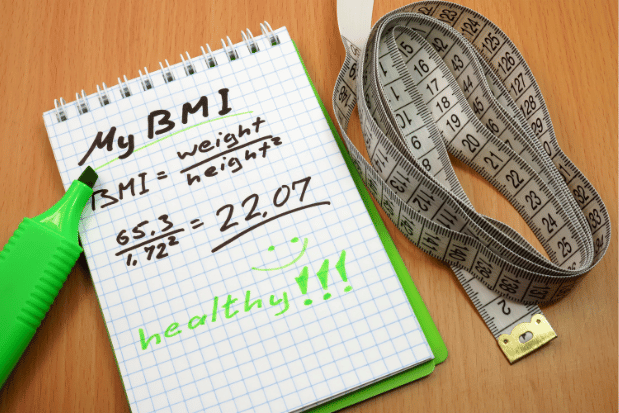Listen to this article
Introduction to Vitamin D
Vitamin D is crucial for our bodies to work well. It helps with things like bone health and immune system function. But did you know you might be able to get vitamin D through a window?
Explanation of Vitamin D
When sunlight hits our skin, it helps our bodies make vitamin D. This happens because sunlight contains a type of light called ultraviolet B (UVB) rays. These rays trigger a reaction in the skin that produces vitamin D.
Importance of Vitamin D for Health
Having enough vitamin D is important for many reasons. It helps our bodies absorb calcium, which is necessary for strong bones. So, without enough vitamin D, our bones can become weak and brittle.
How Vitamin D is Produced
Sun Exposure and Skin Synthesis
When we spend time in the sun, our skin goes to work making vitamin D. This process starts when ultraviolet B (UVB) radiation from the sun reaches our skin. Then, a compound in our skin reacts to the UVB rays, kicking off the production of vitamin D.
Role of Ultraviolet B (UVB) Radiation
UVB radiation is key to the process of making vitamin D in our bodies. It’s a type of light that comes from the sun. So, when we’re exposed to sunlight, especially during certain times of the day and in certain seasons, our skin can produce vitamin D with the help of UVB rays.
Conversion of Cholesterol to Vitamin D
One interesting thing is that our bodies use cholesterol to make vitamin D. When UVB rays hit our skin, they start a chain reaction that ultimately converts a type of cholesterol in our skin into vitamin D. This transformation happens in a few steps, but it’s all thanks to the energy from sunlight.
Factors Affecting Vitamin D Synthesis
Geographic Location and Sun Angle
Where you live plays a big role in how much vitamin D your skin can make. If you’re closer to the equator, the sun’s rays are stronger, which means you can make more vitamin D. But if you’re farther from the equator, like in northern regions, the angle of the sun is lower, and it’s harder for UVB rays to reach your skin, reducing vitamin D synthesis.
Time of Day and Season
The time of day and the season also affect how much vitamin D your skin can produce. Sunlight is strongest when the sun is high in the sky, typically between 10 a.m. and 3 p.m. So, if you’re out during these times, you’re more likely to make vitamin D. Additionally, vitamin D synthesis is more efficient in the summer when the sun is higher in the sky and UVB rays are stronger.
Skin Color and Melanin Production
Another factor is your skin color and the amount of melanin it contains. Melanin is a pigment that gives skin its color and helps protect it from the sun’s harmful rays. However, darker skin has more melanin, which can make it harder for UVB rays to penetrate and trigger vitamin D synthesis. As a result, people with darker skin may need more sun exposure to produce the same amount of vitamin D as those with lighter skin.
Can You Get Vitamin D Through a Window?
Explanation of How Windows Filter UVB Radiation
Windows are designed to let light into our homes, but not all types of light can pass through them easily. UVB radiation, the type of light that helps our bodies produce vitamin D, is often blocked by window glass. This means that even if you’re sitting near a window on a sunny day, most of the UVB rays that your skin needs to make vitamin D are filtered out by the glass.
Research Studies on Vitamin D Synthesis Indoors
Several studies have looked into whether vitamin D synthesis can occur indoors, such as near a window. While some research suggests that small amounts of UVB radiation can penetrate certain types of glass, the levels are usually much lower than what you would get from direct sunlight outdoors. Therefore, relying solely on indoor sunlight exposure through windows may not provide sufficient vitamin D.
Impact of Window Glass Type and Thickness
The type and thickness of window glass can also affect how much UVB radiation passes through. For example, older windows with single-pane glass may block more UVB rays than newer windows with double or triple-pane glass. Additionally, tinted or coated windows designed to reduce glare and UV exposure may further decrease the amount of UVB radiation that reaches indoors. Therefore, even if you’re near a window, the glass itself may limit the amount of vitamin D you can produce from sunlight.
Alternative Sources of Vitamin D
Dietary Sources of Vitamin D
If you can’t get enough vitamin D from sunlight, don’t worry! There are additional methods to obtain this crucial nutrient. One way is through your diet. Foods like fatty fish (such as salmon, mackerel, and tuna), egg yolks, and fortified dairy products (like milk and yogurt) are all good sources of vitamin D. Including these foods in your meals can help ensure you’re getting enough of this essential nutrient.
Vitamin D Supplements
Another option is to take vitamin D supplements. These come in various forms, such as capsules, tablets, or drops, and can be found at most pharmacies or health food stores. Taking a vitamin D supplement can be especially helpful if you live in a region with limited sunlight or have a condition that affects your body’s ability to absorb vitamin D from food or sunlight.
Also Read : Vitamin D Magnesium Turmeric Lemonade Recipe
Fortified Foods and Beverages
Many foods and beverages are fortified with vitamin D, which means that extra vitamin D has been added during processing. Common fortified foods include orange juice, breakfast cereals, and plant-based milk alternatives like soy or almond milk. Incorporating these fortified foods into your diet can be a convenient way to boost your vitamin D intake, especially if you have dietary restrictions or preferences that limit your consumption of natural food sources of vitamin D.
Recommendations for Maintaining Vitamin D Levels
Balancing Sun Exposure and Skin Protection
Finding the right balance between getting enough sunlight for vitamin D production and protecting your skin from harmful UV radiation is essential. Aim for short periods of sun exposure, particularly during the times of day when UVB rays are strongest (around midday). Remember to wear sunscreen with a high SPF, protective clothing, and hats to shield your skin from excessive sun exposure while still allowing for some vitamin D synthesis.
Monitoring Vitamin D Levels with Blood Tests
Regular monitoring of your vitamin D levels through blood tests can help ensure that you’re getting enough of this nutrient. Your healthcare provider can perform these tests to assess your vitamin D status and determine if you need to adjust your sun exposure, diet, or supplementation regimen. If your levels are low, they may recommend increasing your intake of vitamin D-rich foods or taking supplements to reach optimal levels.
Consulting Healthcare Professionals for Guidance
When it comes to managing your vitamin D levels, it’s essential to seek guidance from healthcare professionals, such as your doctor or a registered dietitian. They can provide personalized recommendations based on factors like your age, health status, geographic location, and lifestyle habits. Whether you have concerns about vitamin D deficiency or want to optimize your intake for overall health and well-being, consulting with a healthcare professionals can help ensure that you’re taking the right steps to maintain adequate vitamin D levels.
Conclusion
Summary of Key Points
In summary, vitamin D is crucial for our overall health, playing essential roles in bone health, immune function, and more. While sunlight is a primary source of vitamin D, getting enough through windows alone may be challenging due to UVB radiation being filtered out by glass. Therefore, it’s essential to consider alternative sources such as dietary sources, supplements, and fortified foods to maintain adequate vitamin D levels.
Importance of Considering Various Factors in Vitamin D Synthesis
When it comes to vitamin D synthesis, various factors come into play, including geographic location, time of day, skin color, and window glass type. Understanding these factors can help individuals make informed decisions about sun exposure, dietary choices, and supplementation to optimize their vitamin D levels while protecting their skin from harmful UV radiation.
Final Thoughts on Obtaining Adequate Vitamin D Levels
In conclusion, obtaining adequate vitamin D levels is vital for overall health and well-being. By incorporating a balanced approach that includes sensible sun exposure, dietary sources, and possibly supplementation, individuals can ensure they meet their vitamin D needs. Consulting healthcare professionals for personalized guidance and monitoring vitamin D levels regularly can further support optimal health outcomes. Remember, maintaining adequate vitamin D levels is a crucial step towards promoting lifelong wellness.

Passionate & Certified Nutritionist
A seasoned nutrition specialist dedicated to empowering individuals through personalized dietary guidance. Committed to fostering healthier lifestyles, providing tailored meal plans, and offering evidence-based nutritional advice. Passionate about promoting overall well-being by translating complex nutritional science into practical, sustainable strategies for improved health.














